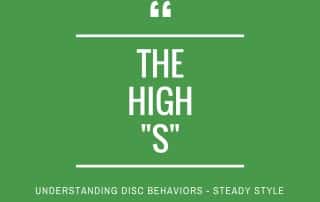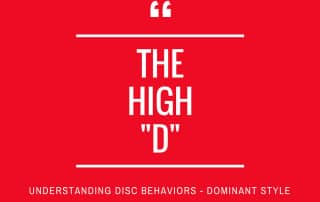DISC: History and Development
DISC has been in development far longer than most people realize. Dating back to 444 B.C., the original DISC model was theorized by Empodocles – a philosopher from Sicily. The original four “elements” proposed by Empodocles were Fire, Air, Water, and Earth. He believed a person’s behavior was affected by these environmental elements, rather than by internal factors known today as DISC Personality Types. Approximately fifty years later, Hippocrates redefined these elements as the Four Temperaments: Choleric, Sanguine, Melancholic, and Phlegmatic.
Carl Gustav Jung and William Moulton Marston
During the early 1900’s, Carl Gustav Jung (known as the founder of analytical psychology) made yet another change to the Four Temperaments. After further research and development, he came to define the four internal factors as Feeling, Intuition, Sensation, and Thinking. This reflected his findings that temperaments directly affect the way we give, receive, and process information. Jung’s discoveries ultimately laid the foundation for the Myers Briggs Personality Test (MBTI), an inferior but well-known cousin of today’s more accurate DISC assessments.
It was not long after Carl Jung that William Moulton Marston wrote a book titled Emotions of Normal People in the late 1920’s. Marston’s book marked the true beginning of modern-day DISC personality theory. He called it the DISC Personality System, which he validated at Harvard University through official research studies. His biggest contribution to DISC personality theory was the acknowledgement and validation that a person’s DISC profile accurately predicts their observable behavior.
With Marston’s work, the four quadrants of the DISC Personality System were renamed for the final time as Dominance, Influence, Steadiness, and Compliance. These definitions are still in use today in modern-day DISC Tests and Behavioral Assessments.
Myers Briggs Personality Test
The Myers Briggs Personality Test (MBTI) indicates personal preferences in how people view the world, process information, and make decisions. It’s a popular personality test frequently used in the workplace to improve communication and help managers better motivate their employees.
It has many shortcomings, however, mainly because you are lumped into one of just sixteen (16) personality categories. This oversimplification means there is little functional insight or value of the MBTI assessment in the workplace, even if the test itself is fun to take and share with colleagues. Furthermore, MBTI is not a validated assessment for hiring, communication, training, or development.
DISC Personality Tests
There are many flavors of DISC Personality Tests available in the market today. These range from free and useless to expensive and insightful. Many of the less expensive DISC Personality Tests available use a model similar to the Myers Briggs Personality Test. Such assessments only provide between 4-16 final profiles from which to draw insight. Oversimplified profiling reduces accuracy and validity, and also renders the assessment useless for hiring, training, and development.
By contrast, our DISC Tests and/or Talent Insights Assessments provide 384 profiles derived from 19,000 possible combinations. Our partner, TTI Success Insights, was the first company to computerize the DISC Personality Test in the 1980’s and remains the industry-leader for reporting accuracy and validity today.
The unparalleled validity and accuracy of our performance assessments yields detailed, validated, and functional results. These are professional tools with research, patents, case studies, and legal clearances behind them – things no other DISC Personality Test or related product has today.
Putting this into context, our DISC Personality Test and related assessments have been used over 30 million times around the world at over 100,000 companies. They are available in more than 40 languages and currently are in use in more than 90 countries. All of our assessments have a proven track record and are validated for hiring, training, and development.
Applications of DISC in the Workplace
DISC is frequently used in the workplace for:
- Employee Selection – Many employers use DISC Personality Tests and related assessments to screen applicants and evaluate job fit, which is called Job Benchmarking or Predictive Analytics.
- Training & Development – DISC workshops are popular activities for small and large companies alike. They help employees apply the insights from their DISC tests for improved communication and productivity.
- Sales Skills Training – Another frequent application of DISC is sales training. Combined with tools like our Sales Skills Index, which compares a salesperson’s profile to 30,000 top sales performers, DISC can help a salesperson communicate more effectively with prospects and customers – increasing their persuasiveness and leading to more closed deals.
Ready to take your DISC Personality Test or learn more? Contact us today to submit your inquiry and we will gladly assist you. Alternatively, learn more from our articles below or with our free online DISC eLearning course.



